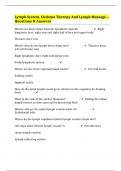Summary
Summary Intercultural Sensitivity, from denial to intercultural competence
- Course
- Institution
- Book
This is a summary of the book: Intercultural sensitivity, from denial to intercultural competence Nunez, C. ISBN: 5550 The book has 8 chapters, every chapter is elaborated specifically.
[Show more]













